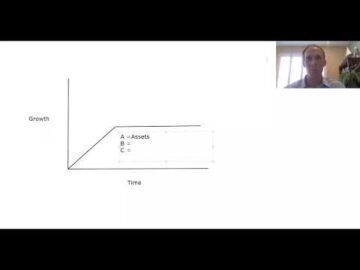Journal in accounting definition

For example, sales would be recorded in a sales journal and payroll would be recorded in a payroll journal. A summary of those transactions was periodically posted to the correct general ledger account as part of the accounting cycle. Journal entry accounting was the only way to enter data into financial records.
How a Common Accounting Rule Leads to More Layoffs and Less … – The Wall Street Journal
How a Common Accounting Rule Leads to More Layoffs and Less ….
Posted: Fri, 28 Jul 2023 15:00:00 GMT [source]
It is not mandatory to show the journal entry which is submitted at the end of the purchase journal. Only in the invoice, the trade discount is shown by way of deduction from the invoice price. In purchase and sale books/journals the net purchase or sale value after deducting trade discount from the total value of goods is shown. But many are of the opinion to record all credit transactions in the multi-column purchase journal.
Journal Entry Fraud
This is useful when journal entries are being researched at a later date, and especially when they are being reviewed by auditors. The format of sales return is similar to that of sales journal excepting challan/invoice column where credit note is written. The special journal, where purchase returns of credit purchase are recorded, is called a purchase return journal. This running account of transactions is critical for recording the day-to-day activities of the business.
- You will have to decrease the cash account and the increase the asset account.
- If you purchased a computer system and printer for $5,000, cash is withdrawn from your bank account and transferred to the business you bought it from.
- The National Pipeline Advisory Group represents a broad spectrum of leaders in the accounting profession.
- Journals are straightforward to review and easily transferred later in the accounting process.
Thus, the use of debits and credits in a two-column transaction recording format is the most essential of all controls over accounting accuracy. For instance, Pyle and Larson have shown credit purchase of assets and supplies, etc. in a purchase journal under a separate column – debiting asset or office supplies and crediting accounts payable. Journals and ledgers are where the financial transactions are recorded. The journal, also known as the book of first entry, records transactions in chronological order. It’s prepared from the current transactions and does not start with an opening balance. The detailed information of the individual transactions is entered in the journal.
Types of Accounting Journals: Explained with Examples
In modem age, the introduction of cash receipts journal is in practice in medium and large size business organizations. Here are numerous examples that illustrate some common journal entries. For example, if a company bought a car, its assets would go up by the value of the car.
A journal is the company’s official book in which all transactions are recorded in chronological order. Although many companies use accounting software nowadays to book journal entries, journals were the predominant method of booking entries in the past. However, in the double-entry bookkeeping method, whenever a transaction occurs, there are at least two accounts affected. While making the journal entries, we must ensure that the debits and credits are in balance. But with accounting software, transactions like those above are automatically entered in the correct accounts as invoices are created, customer payments are processed and bills are paid. This means that accountants today make comparatively few journal entries.
How to prepare Journal Entries in Accounting
In simple terms, the first step to proper financial reporting heavily relies on recording accurate journal entries. Finally, just like how the size of the forces on the first object must equal that of the second object, the debits and credits of every journal entry must be equal. Debits and credits are the basis of a journal entry as they tell us that we are acquiring or selling something.
Before computerized bookkeeping and accounting, the transactions were entered manually into a journal and then posted to the general ledger. Apart from the general journal, accountants maintained various other journals including purchases and sales journal, cash receipts journal and cash disbursements journal. With accounting software, today you’re likely to find only a general journal in which adjusting entries and unique financial transactions are entered.
To combat fraud, IRS steps up ERC claim enforcement – Journal of Accountancy
To combat fraud, IRS steps up ERC claim enforcement.
Posted: Fri, 28 Jul 2023 14:49:00 GMT [source]
Depending on the type of account, it will increase or decrease when it is debited or credited. The sales journal typically is used to record inventory or merchandise sales on credit. There are many different accounting journals and each journal is used for slightly different purposes.
Posting in Ledger
When a transaction is made, a bookkeeper records it as a journal entry. If the expense or income affects one or more business accounts, the journal entry will detail that as well. While it’s rarely used, the single-entry bookkeeping method can also be used for journal entries. In this method, there is only a single account used for each journal entry which is a running total of cash inflows and cash outflows. For example, if you purchase a piece of equipment with cash, the two transactions are recorded in a journal entry. You will have to decrease the cash account and the increase the asset account.
- So, you credited your cash account and debited your equipment account.
- Depending on the size and complexity of your business, a reference number can be assigned to each transaction.
- For example, if a company bought a car, its assets would go up by the value of the car.
- All of these different journals are optional and can be used if the company wants to.
- So, at the time of posting in the ledger, its dual aspects are to be completed.
When there are more than two lines of entry in a journal, it’s known as compound entry. This is often used to record several transactions at once or enter details of complex transactions such as payroll that involves a number of deductions and tax liabilities, and hence, contains several lines. The transactions large business payroll & hr solutions of the same nature are recorded in a special journal. These are termed as a daily journal, subsidiary journal or special journal. For convenient keeping of accounts, maintaining more than one special journal according to the nature of transactions instead of one journal is called classification of the journal.
Examples of Journal Entries
Since the spreadsheets prepared manually are unable to verify key information such as account numbers, entries might be made incorrectly. Purchase of assets on credit, the stock of goods at the year-end, rectification of errors, adjustment of accounts, etc. are recorded in journal proper. For the acceptability of cash payment, business organizations pay bills by cheques. The cash payment journal contains many money columns as cash payments are made under many heads. The main sources of cash receipts are two; Cash from cash sale and cash from accounts receivable. So, at the time of posting in the ledger, its dual aspects are to be completed.
A reversing journal entry is one that is either reversed manually in the following reporting period, or which is automatically reversed by the accounting software in the following reporting period. There are two special types of accounting journal entries, which are the reversing entry and the recurring entry. The seller also sends a note to the purchaser as a reply which is called a credit note. It may be mentioned that goods purchased on cash if returned are not recorded in the purchase return journal. The special journal used for recording all types of cash receipts is called the cash receipts journal.
This means that debiting an account on the left side of the equation — an asset account — increases that account. Debiting an account on the right side of the equation — a liability or an equity account — will decrease the balance in that account. They provide important information that are used by auditors to analyze how financial transactions impact a business. A recurring journal entry is one that repeats in every successive reporting period, until a termination date is reached. This can be done manually, or can be set up to run automatically in an accounting software system.

Transactions are primarily recorded in the journal and thereafter posted to the ledger. A journal stores a complete record of every business transaction the company makes. This usually includes the transaction date, transaction description, accounts that were affected, as well as the debits and credits.
So, you credited your cash account and debited your equipment account. If you then sold the same system for $5,000, you would credit your equipment account and debit your cash account. While this may not sound correct, your chart of accounts tells you that an equipment account decreases with a credit and a cash account increases with a debit. Most businesses use double-entry accounting systems for accuracy in balancing the books. Any business that uses a double-entry accounting system should use at least a general accounting journal and may need to use specialized journals depending on the complexity of their business.
The special journal used for recording the credit purchase of merchandise is called a purchase journal. But where cash receipts journal and cash payments journal are maintained cash book is not needed. In an accounting career, journal entries are by far one of the most important skills to master. Without proper journal entries, companies’ financial statements would be inaccurate and a complete mess. A one-line journal entry is never made as the entries would not balance. The examples here are pretty simple, but imagine how easy it would be to make mistakes if you had to rely on manual journal entry accounting to get data into the general ledger.

For example, when a business buys supplies with cash, that transaction will show up in the supplies account and the cash account. The special journal, where the credit sale returns are recorded, is called a sales return journal. The sales return journal is prepared from debit notes sent by the buyer with returned goods.
